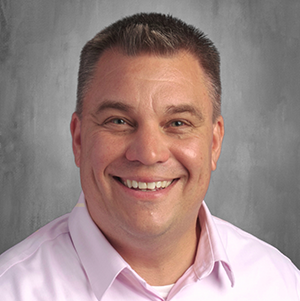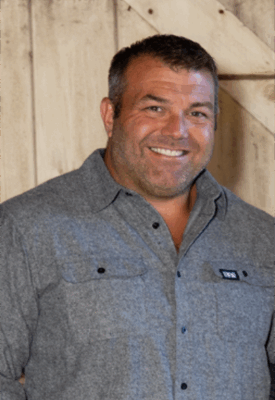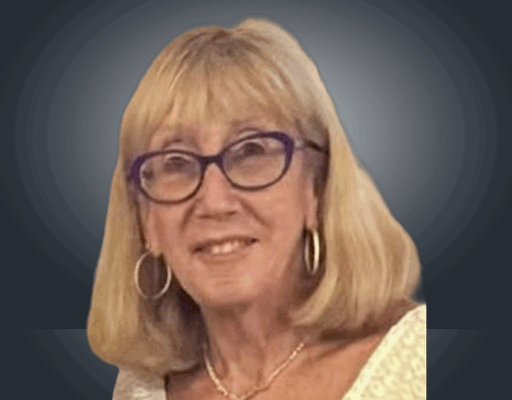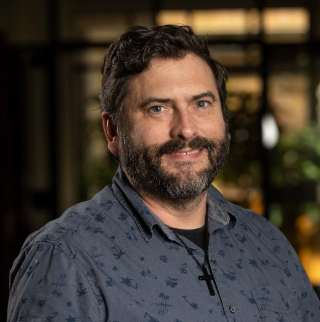 MassCUE is pleased to announce John Nieratko as our Featured Educator for May 2023!
MassCUE is pleased to announce John Nieratko as our Featured Educator for May 2023!
When he became principal of Jordan/Jackson Elementary School in Mansfield in 2015, John Nieratko had a vision. He wanted to encourage an environment where students could learn 21st century skills. He saw STEM education as a way to meet changing standards while keeping students engaged. So at one of his first staff meetings, he put up a slide that illustrated how one STEM activity connected with so many of the standards teachers are required to meet.
“The font size was so small, but it was intentional to show that this wasn’t just a fun tool,” says Nieratko. “Turning these activities and lessons into units of study – it’s about how do we hit all of the standards and how do we do it efficiently and effectively – and with equity in mind.”
One of the ways Nieratko has promoted a STEM culture at Jordan/Jackson is by transforming spaces to allow for this kind of teaching and learning. When teachers asked him if they could use an empty classroom as a science lab, it turned out to be a great place for the students and the teachers to experiment. Teachers had the opportunity to work through curriculum challenges in the space before trying them with students.
“When you do that professional development in the same space with the same activities that the students will be doing, the teachers get to see the value in those activities and those lessons,” Nieratko says.
Nieratko points out that STEM activities are really engaging for students. They can also facilitate a shift in thinking for students and teachers.
“For so many years it was the teacher delivering the content,” Nieratko says. “I know it’s a bit of a cliché, but staff need to be comfortable making the shift into being a facilitator of knowledge – providing parameters and then letting the students grapple with something and learn it on their own.”
Another space that has gotten a STEM makeover is a conference room across from Nieratko’s office that has been transformed into the Innovation Station. It started as a place where classes could come in and work on coding activities using iPads and Dash and Dot programmable robots. It has grown to include many other digital learning tools including LEGO, Cubelets, Makey Makeys and cameras for stop-motion videos. Teachers could use Google Calendar to sign up to use the room and Nieratko would come in at the beginning of class to make sure everything was connected and ready to go. As teachers and students have had good experiences using the space, momentum has grown.
The Innovation Station has also served as space for Social Emotional Learning (SEL). When a couple of students were having trouble with other students at recess, they started coming in and working on a robotics project instead. Before the project was over, their progress was displayed at curriculum night and several other students wanted to join in.
“The students got the chance to shine in front of their class, which was great,” Nieratko says. “We continue to find opportunities to bring students into the space, whether it is with a behavior support plan or just an alternative way to be social.”
Nieratko says communication has been the key to the success of these initiatives.
“It’s really articulating that vision and making sure that all stakeholders understand,” says Nieratko. “Supporting professional development, including photos in family newsletters and sharing success stories with families and staff – all of that builds momentum. Then people are coming on board for genuine good reasons.”
Building relationships with staff and building teams has been another important part of the vision. Nieratko says he feels fortunate to work with so many dedicated teachers and staff. He encourages them to take risks.
“Creating an environment where it’s safe to take a risk is essential within a classroom or a school,” Nieratko says. “We want to make sure that teachers are supported and that they know if they try something new and it fails, that’s okay.”
“If you’re creating an emotionally safe environment for students and staff to work in, then you’re going to get the best out of everybody, he adds.
Nieratko says other leaders who want to incorporate more STEM learning should be patient and flexible.
“What you end up with is definitely going to be different than what you envisioned and that’s a good thing,” Nieratko says. “It always surprises you where students and teachers take it. They’ll come up with something that you could never have imagined – and that’s what you want.”
He says the result is worth it.
“When you walk into the Innovation station or the cafeteria and everybody’s coding and you can’t pick out the student that’s on an IEP from the student that’s advanced from the student that’s working on a behavior support plan. When they’re all working together and engaged, those are powerful moments.”
In 2005, I left a career in Finance to pursue a passion for education. As an elementary classroom teacher in the Attleboro Public School District, I quickly experienced the profound impact that hands-on learning experiences and the targeted use of innovative tools had on student growth. Enhancing traditional lessons with collaborative and creative opportunities for students through the use of technology clearly improved student achievement in all subject areas.
In my twelfth year as an administrator in Mansfield and my eighth as Principal of the Jordan/Jackson Elementary School, I have seen incredible increases in student confidence, curiosity, achievement and social skills through the integration of STEM/STEAM units of study. With the engagement of a talented and collaborative staff, we continue to ensure equitable experiences for students and inspire them to envision and achieve their life goals.
Some of our most impactful tools we utilize are coding with Dash and Wonder Workshop, creating with Cubelets, designing with Lego Simple Machines, filming using green screen and stop animation apps.
 Print this post
Print this post



